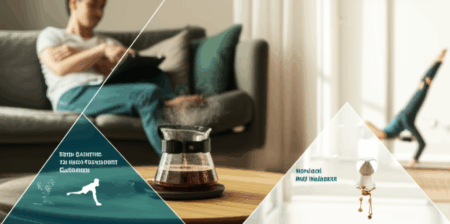In an increasingly complex world, mental well-being has emerged as a critical global health priority. Yet, pervasive stigma and a lack of open dialogue often hinder individuals from seeking the help they need. This is where symbolic mental health initiatives play a transformative role, leveraging universal imagery, powerful campaigns, and relatable gestures to break down barriers, foster understanding, and promote healing. These initiatives serve as beacons of hope, offering a non-intimidating entry point into crucial conversations about mental health.

What Are Symbolic Mental Health Initiatives?
Symbolic mental health initiatives encompass a broad spectrum of efforts that use tangible or abstract representations to convey messages about mental well-being, recovery, and support. They are programs and resources designed to support individual mental well-being, often through visual, linguistic, or action-based symbols that evoke emotion and meaning beyond literal interpretation. These symbols can be physical objects, gestures, colors, phrases, or large-scale campaigns designed to raise awareness and encourage engagement.
Their power lies in their ability to communicate complex ideas and feelings efficiently and universally, resonating deeply with individuals by tapping into shared human experiences while also reflecting personal stories of struggle and resilience.

The Purpose and Profound Impact of Symbolism in Mental Health
Symbolic initiatives are not merely decorative; they are strategic tools with profound psychological and social impact. They aim to:
- Reduce Stigma: By making mental health visible and normalizing discussions, symbols directly counter the myths and fear often surrounding mental illness, encouraging a more compassionate and supportive society.
- Foster Open Conversations: Symbols provide a common language and a safe entry point for individuals to discuss their experiences without fear of judgment. Campaigns like #BreakTheStigma encourage open dialogue and create supportive communities.
- Provide Comfort and Meaning: For those on a journey toward mental well-being, symbols offer comfort, motivation, and a reminder of personal growth, resilience, and hope. They can represent personal strength and achievements, offering a visual reminder of progress.
- Encourage Help-Seeking: Recognizing a mental health symbol can act as an emotional trigger, prompting individuals to research services, join support groups, or schedule therapy sessions. This mechanism transforms passive acknowledgment into proactive steps toward professional care.
- Empower Individuals: By adopting or creating personal symbols, individuals can express their feelings, ideas, and experiences that are difficult to put into words, providing unique, meaningful representations of their journeys, struggles, and triumphs.
- Raise Awareness: Large-scale symbolic campaigns draw public attention to the prevalence of mental health challenges and the importance of mental fitness.

Common and Campaign-Specific Symbolic Initiatives
The landscape of symbolic mental health initiatives is diverse, ranging from globally recognized emblems to innovative public awareness campaigns.
Universal Symbols of Hope and Recovery
Several symbols have gained widespread recognition in the mental health community:
- The Green Ribbon: This is the universal symbol for mental health awareness. Wearing or displaying a green ribbon shows support, promotes awareness, and encourages open conversations about mental health. Green represents hope, strength, support, and encouragement for those struggling with mental health issues.
- The Semicolon: Perhaps one of the most poignant symbols, the semicolon represents hope and continuation. It signifies a moment when someone could have chosen to end their life but decided to continue their story. Project Semicolon, a non-profit, popularized this symbol to support individuals battling depression, addiction, self-harm, and suicide.
- The Butterfly: Symbolizing transformation and rebirth, the butterfly emerges from a cocoon, signifying a journey from struggle to freedom. In mental health recovery, it reminds us that change is possible and beauty can arise from difficult times.
- The Phoenix: This mythical bird, rising from its ashes, symbolizes rebirth and renewal. It’s a powerful emblem of resilience and triumph over adversity in mental health recovery.
- The Lotus Flower: Often associated with transformation and renewal, the lotus flower emerges pristine from muddy waters, representing purity, enlightenment, and rebirth in the context of healing.
Innovative Campaigns and Gestures
Beyond universal symbols, numerous organizations and brands have launched impactful campaigns that use symbolic gestures to drive awareness and support:
- GymNation’s “Weight-Training Equipment Removal” (UAE & Saudi Arabia): On World Mental Health Day, this fitness chain temporarily removed all weight-training equipment from its floors. This symbolic act served as a visual metaphor to encourage individuals to focus on alleviating psychological burdens, hosting mental health sessions in place of the weights.
- McDonald’s “The Meal” (UK): To raise awareness of children’s mental health during Mental Health Awareness Week, McDonald’s removed the iconic smile from millions of its Happy Meal boxes. This initiative used a powerful visual to highlight the need to normalize conversations about sadness and mental health early in life.
- Calm’s “30 Seconds of Silence” Ads: During the high-anxiety US election night coverage, the meditation app Calm purchased 30-second ad slots on major networks, delivering only silence. This symbolic pause aimed to highlight the importance of mental health and offer viewers a restorative moment.
- Maybelline’s “Brave Together” and JanSport’s “#LightenTheLoad”: These campaigns focus on offering resources and fostering communities where honest conversations about anxiety, depression, and mental health are welcomed, using hashtags and platforms to encourage sharing experiences and breaking down stigma.
- R U OK? Day (Australia): This non-profit initiative encourages people to ask a simple yet profound question: “Are you OK?” It emphasizes the importance of checking in on those around us, recognizing that a facade of normalcy can often conceal struggles.
- Logic’s “1-800-273-8255” Song: The American rapper Logic released a song featuring the phone number for the National Suicide Prevention Lifeline. This direct and symbolic use of music in 2017 led to a significant increase in calls to the hotline and a drop in suicide rates.
- WWF’s “Nature Prescription”: This campaign symbolically promotes time in nature as a remedy for stress and anxiety, highlighting the restorative power of being outdoors for mental well-being.
- ASICS – Dramatic Transformation: This campaign partnered with a mental health charity to show the profound effects of exercise on mental well-being, featuring influencers before and after short workouts to demonstrate that even a small commitment to movement can significantly enhance mood.

Benefits of Embracing Symbolic Mental Health Initiatives
The benefits of these initiatives extend across individual, community, and societal levels:
- Broad Accessibility: Symbols often transcend language and cultural barriers, making mental health messages accessible to a wider audience.
- Emotional Resonance: They tap into emotions, memories, and intuition in ways that purely logical communication cannot, fostering deeper understanding and empathy.
- Empowerment through Identification: Individuals can find solace and strength in identifying with a symbol, feeling less isolated in their struggles.
- Catalyst for Action: Symbolic acts can inspire tangible steps, such as seeking professional help, joining support groups, or advocating for policy change.
- Normalizing Discussion: Repeated exposure to mental health symbols and campaigns helps to normalize conversations, integrate mental health into daily discourse, and reduce the perception of it as a taboo subject.

Challenges and Considerations
While powerful, symbolic mental health initiatives also face challenges:
- Authenticity and Relatability: Campaigns must feel authentic and relatable to genuinely connect with audiences. Those guided by data and human touch tend to be more successful.
- Risk of Superficiality: Without substance, symbolic gestures can be perceived as tokenistic. They need to be backed by actual resources, support systems, and a genuine commitment to mental health.
- Over-pathologizing Normal Emotions: Increased awareness, if not carefully framed, can sometimes lead to pathologizing normal human emotions or experiences, potentially causing individuals to feel overly anxious about their mental health.
- Increased Demand for Services: Successful awareness campaigns can lead to a surge in demand for mental health services, potentially straining already overburdened healthcare systems if not managed with increased resource allocation.
- Stigma Persistence: Despite efforts, stigma remains a significant barrier to accessing care globally, highlighting the ongoing need for sustained and multifaceted initiatives.
Conclusion
Symbolic mental health initiatives are invaluable tools in the global effort to destigmatize mental illness, promote understanding, and encourage healing. By leveraging the power of shared meaning, these initiatives create pathways for individuals to connect, communicate, and seek support. As societies continue to prioritize mental well-being, the thoughtful and strategic use of symbols and symbolic actions will remain critical in building a more empathetic, aware, and supportive world where mental health is openly discussed and cared for, not hidden in silence.







